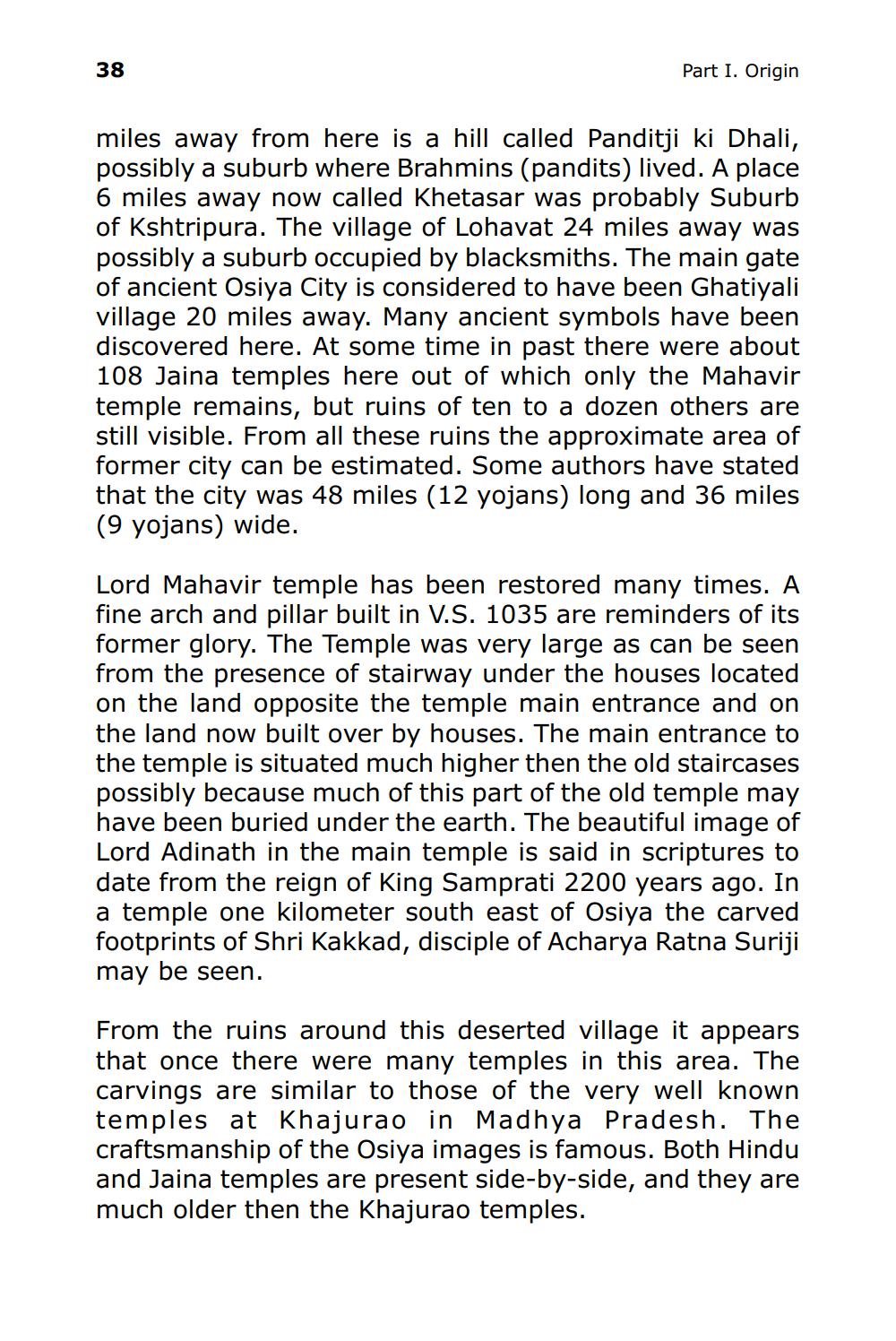________________
38
Part I. Origin
miles away from here is a hill called Panditji ki Dhali, possibly a suburb where Brahmins (pandits) lived. A place 6 miles away now called Khetasar was probably Suburb of Kshtripura. The village of Lohavat 24 miles away was possibly a suburb occupied by blacksmiths. The main gate of ancient Osiya City is considered to have been Ghatiyali village 20 miles away. Many ancient symbols have been discovered here. At some time in past there were about 108 Jaina temples here out of which only the Mahavir temple remains, but ruins of ten to a dozen others are still visible. From all these ruins the approximate area of former city can be estimated. Some authors have stated that the city was 48 miles (12 yojans) long and 36 miles (9 yojans) wide.
Lord Mahavir temple has been restored many times. A fine arch and pillar built in V.S. 1035 are reminders of its former glory. The Temple was very large as can be seen from the presence of stairway under the houses located on the land opposite the temple main entrance and on the land now built over by houses. The main entrance to the temple is situated much higher then the old staircases possibly because much of this part of the old temple may have been buried under the earth. The beautiful image of Lord Adinath in the main temple is said in scriptures to date from the reign of King Samprati 2200 years ago. In a temple one kilometer south east of Osiya the carved footprints of Shri Kakkad, disciple of Acharya Ratna Suriji may be seen.
From the ruins around this deserted village it appears that once there were many temples in this area. The carvings are similar to those of the very well known temples at Khajurao in Madhya Pradesh. The craftsmanship of the Osiya images is famous. Both Hindu and Jaina temples are present side-by-side, and they are much older then the Khajurao temples.




